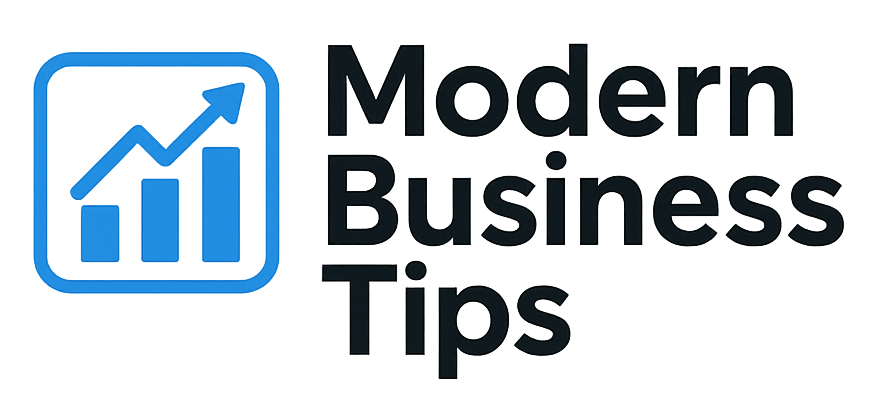Did you know that companies with clear goals for operational efficiency can boost their productivity by up to 30%? This shows how important setting these goals is for a business’s success and staying ahead. As I work on making my e-commerce business better, I see how these goals are key to reaching my goals.
By working on making my e-commerce business more efficient, I make sure it uses its resources well. This means using the skills of my team, time, and technology wisely. This helps my business run smoothly and meet customer needs better. In this article, I’ll show how setting these goals helps my business grow and succeed.
Key Takeaways
- Operational efficiency goals can drive productivity increases of up to 30%.
- Improving operational efficiency in e-commerce is key for staying competitive.
- Setting supply chain goals boosts overall efficiency.
- Clear goals help align resources and efforts towards common goals.
- Efficient operations can better meet customer demands.
Understanding Operational Efficiency Goals
Operational efficiency goals are like a roadmap for businesses to improve. They aim to use resources well and cut down on waste. This helps businesses not just save money but also make better products and keep customers happy.
These goals are key to staying ahead in a changing market. They help companies stay competitive and grow.
What Are Operational Efficiency Goals?
Operational efficiency goals are specific targets for better performance. They include making things faster, cheaper, and of higher quality. By setting these goals, companies can track their progress and stay effective in the market.
Importance in Business Strategy
Knowing the value of operational efficiency is vital for a good business strategy. Companies that focus on it can work more efficiently. This leads to faster growth and stronger customer loyalty.
It’s all about making the business better and keeping customers happy. This is key for lasting success in any field.
Setting Clear Operational Efficiency Goals
Setting clear goals for operational efficiency is key for any business wanting to improve. The SMART criteria help set effective targets. By making sure our goals are Specific, Measurable, Achievable, Relevant, and Time-bound, we can align them with our business goals.
SMART Criteria for Goal Setting
The SMART goals for business make setting goals easy and effective. Each part of SMART is important for improving operational efficiency:
- Specific: Goals must be clear to guide our efforts.
- Measurable: We need to track progress with specific metrics.
- Achievable: Goals should be realistic to keep us motivated.
- Relevant: Goals must align with our business objectives.
- Time-bound: Deadlines add urgency and accountability.
Examples of Effective Goals
Here are some examples of setting operational efficiency targets:
| Goal Description | SMART Criteria |
|---|---|
| Reduce order fulfillment times | Specific: Reduce by 20%, Measurable: Track average fulfillment time, Achievable: Current average is 30% higher than target, Relevant: Improves customer satisfaction, Time-bound: Achieve within 6 months. |
| Increase production output | Specific: Increase by 15%, Measurable: Count units produced, Achievable: Current resources allow for increased capacity, Relevant: Aligns with demand growth, Time-bound: Implement in the next quarter. |
| Maintain quality standards | Specific: Reduce defects to below 2%, Measurable: Audit defect rates, Achievable: Training programs in place, Relevant: Protects brand reputation, Time-bound: By the end of the fiscal year. |
By using SMART criteria and these examples, we can set goals that lead to real improvements in performance.
Analyzing Current Processes
Understanding how things work starts with looking at what’s happening now. We use different methods to find out what’s slowing things down. This helps us see where we can do better.
Knowing where things get stuck is key to making things better. It’s also important to make sure everyone is doing their best. This helps the whole team succeed.
Identifying Bottlenecks
Finding where things get stuck is important. It can be because of bad task management or poor communication. Tools like flowcharts help us see these problems clearly.
By looking closely at how things work, we can find and fix these issues. This makes everything run smoother.
Assessing Resource Allocation
Checking how resources are used is also key. If resources are not used well, it can make people unhappy and less productive. By looking at how resources are used, we can find ways to do better.
This might mean changing who does what, getting new tools, or training. Making sure everyone is using their skills well is important.
| Bottleneck Type | Description | Potential Solutions |
|---|---|---|
| Workflow Delays | Slowdowns in the completion of tasks due to unclear processes. | Implementing clear procedures and guidelines. |
| Communication Gaps | Information not being effectively shared among team members. | Utilizing collaboration tools to enhance communication. |
| Resource Misallocation | Teams not utilizing their full capacity leading to inefficiency. | Conducting regular assessments of team capabilities and workloads. |
By doing these things, we help make any organization run better. We lay the groundwork for even more improvements in the future.
Implementing Technology Solutions
In today’s fast-paced world, using technology for efficiency is key. Automation tools help streamline processes, cut down on manual work, and boost team productivity. The right tech can greatly improve how well a company operates, helping them meet market needs quickly.
Automation as a Tool for Efficiency
Automation tools change the game, letting companies do tasks with little human help. This not only cuts down on mistakes but also makes sure results are the same everywhere. By automating simple tasks, teams can dive into more important work.
Many businesses have seen big gains in productivity thanks to these tech solutions.
Choosing the Right Software
Choosing the right software for better operations is a big deal. You need to think about how well it fits with what you already use and if it’s worth the cost. It’s important for the new software to work well with what you have.
I look for software that makes teamwork better and makes things run smoother. My aim is to find solutions that work now and can grow with the company. For tips on picking the best tech, check out this resource on tech insights.
| Aspect | Automation Tools | Traditional Methods |
|---|---|---|
| Efficiency | High | Moderate |
| Error Rate | Low | High |
| Time Consumption | Minimal | Significant |
| Scalability | Easy | Difficult |
Employee Training and Engagement
Effective employee training is key to a productive work environment. I aim to create training programs that give employees the skills they need. This boosts their morale and commitment to the company’s success.
Also, it leads to better staff engagement strategies. This makes the team more cohesive and motivated.
Developing Training Programs
Creating detailed training programs is essential. It ensures employees know the latest trends and practices. I design programs that are interactive and relevant.
This way, team members can learn effectively. Training should be ongoing to keep skills sharp. Investing in these programs leads to big feedback-driven improvements in the organization.
Encouraging Participation and Feedback
Encouraging employees to participate in training is important. When they engage actively, they learn more. Asking for feedback helps improve training materials and methods.
This approach strengthens the training process. It also makes employees feel more responsible for their roles. By using these staff engagement strategies, we work together towards better efficiency.
Measuring Performance Metrics
It’s key to know how to measure performance metrics to keep goals on track. By picking the right KPIs, I can see how different parts of the business are doing. This part talks about the tools for checking performance and why it’s important to track it often.
Key Performance Indicators (KPIs)
Choosing the right KPIs is important for measuring performance well. These should match the company’s goals. Some common KPIs are:
- Production Efficiency: Shows how much is made compared to what could be made.
- Cost per Unit: Looks at the cost to make one item.
- Stock Turnover Rate: Checks how fast items are sold and restocked.
These metrics help keep an eye on operations, guide decisions, and find areas to improve.
Tracking Progress Over Time
Keeping an eye on things regularly is key. By tracking KPIs, I can spot trends and make smart choices. Here’s how to do it:
- Establishing a Reporting Schedule: Check KPI data often to stay informed.
- Using Dashboards: Visual tools make data easy to see and understand.
- Conducting Periodic Reviews: Compare performance to goals to tweak strategies.
Tracking performance well helps the business stay flexible and ready for changes.
Continuous Improvement Practices
Improving operations is key to better efficiency. Using the right continuous improvement methods helps streamline processes. The Kaizen approach focuses on small, steady changes for big benefits.
The Kaizen Approach
The Kaizen method is about making small, consistent changes. It involves everyone in the team. This way, everyone’s ideas are heard and valued.
It lets staff spot and fix problems. This boosts motivation and efficiency. Change management helps keep these improvements going, making everyone happier and more productive.
Leveraging Data for Better Decisions
Using data is vital for making smart choices. Analytics help track progress and guide decisions. This way, changes are made more effectively.
Good data analysis uncovers hidden trends. It helps find the best ways to improve. For more tips, check out continuous improvement strategies online.
| Aspect | Importance | Example |
|---|---|---|
| Employee Engagement | Crucial for identifying areas of improvement | Suggestions from staff on inefficiencies |
| Data Utilization | Enhances decision-making process | Analyzing operational metrics |
| Kaizen Implementation | Drives incremental improvement | Small weekly process reviews |
| Change Management | Ensures sustainability of improvements | Training sessions for staff |
Aligning Teams with Goals
Creating a culture of teamwork boosts a company’s work efficiency. A strong team alignment strategy helps all departments aim for the same goals. This unity removes barriers that slow down work.
Cross-Department Collaboration
Teamwork between departments brings everyone together. It has many benefits:
- More innovation from different viewpoints.
- Quicker problem-solving with all skills combined.
- Smarter workflows that cut down on waste.
Regular meetings between departments help teams share goals and updates. This practice shows where more help is needed. It aligns efforts and boosts work results.
Communicating Objectives Clearly
Clear talk in business is key for team understanding. When I clearly state goals, the team works better together. Important steps include:
- Using dashboards to track progress.
- Having monthly meetings to talk about goals and get feedback.
- Encouraging open talks where everyone can share ideas.
By making communication clear, I ensure everyone knows their role in achieving big goals. This boosts motivation and responsibility.
Overcoming Challenges to Efficiency
Organizations often face many challenges when trying to be more efficient. Issues like resistance to change, not having enough resources, and poor processes are big hurdles. It’s key to spot these problems and find ways to solve them to improve.
Common Obstacles in Operations
There are several common obstacles to achieving operational efficiency. These include:
- Resistance to Change: People, both employees and leaders, might be scared to try new things. They worry about losing their jobs or facing too much change.
- Resource Limitations: Trying to get more efficient often takes a lot of time, money, and people.
- Data Quality Issues: Many struggle with having good, easy-to-get data. This makes it hard to make smart decisions.
- Balancing Short-Term and Long-Term Goals: The need for quick results can clash with the goal of lasting efficiency.
- Integration Complexities: Adding new tech to old systems can be very hard.
Strategies for Problem Solving
To beat these challenges, several strategies work well:
- Communication: Talking clearly about why change is good and getting everyone involved can help.
- Training and Support: Giving teams the right training helps them learn new things faster.
- Data Governance: Spending on making data better and easier to use is very important.
- Goal Alignment: Having both short-term and long-term goals helps meet today’s needs while planning for tomorrow.
- Continuous Improvement: Keeping an eye on things and always looking to get better helps keep efficiency up.
Using these strategies, businesses can get past obstacles and do better. They can also create a culture that welcomes new ideas and change. For more on how to improve, check out this article on improving operational efficiency.
Case Studies of Successful Implementation
Learning from companies that have improved their operations is very helpful. I will share real-world examples of business success and explain what made them successful. These successful operational efficiency case studies offer valuable lessons for businesses of all kinds.
Real-Life Examples
Mailchimp is a great example. It started in 2001 as a side project. By focusing on quality and understanding customers, it became a top marketing tool. This shows how important it is to meet market needs for growth.
Basecamp is another success story. It began as a project management tool without much funding. It shows that controlling growth and listening to the market can lead to lasting success.
Lessons Learned from the Field
Many startups fail because they grow too fast or don’t know their market well. Studies by CB Insights show that not understanding the market can stop growth. A key lesson is to keep your business lean and test ideas with MVPs and customer feedback.
Using KPIs like CAC, CLV, and Churn Rate helps measure success. These metrics guide decisions and help improve operations continuously.
Future Trends in Operational Efficiency
Looking ahead, technology and market changes will shape business strategies. The use of new tech like artificial intelligence and machine learning will boost productivity. These tools are changing how companies work, making them more efficient.
Embracing Innovative Technologies
Companies need to adopt these technologies to stay ahead. AI and automation help make quick decisions by analyzing lots of data. This leads to fewer mistakes and more time for important tasks.
So, businesses can keep up with market changes better. They become more flexible and ready for new challenges.
Anticipating Changes in Market Dynamics
It’s also key to predict market shifts. Companies must be quick to change, using data to guide them. This way, they can meet customer needs and stay efficient.
By focusing on tech and market trends, businesses can grow. They’ll be ready for whatever comes next.



